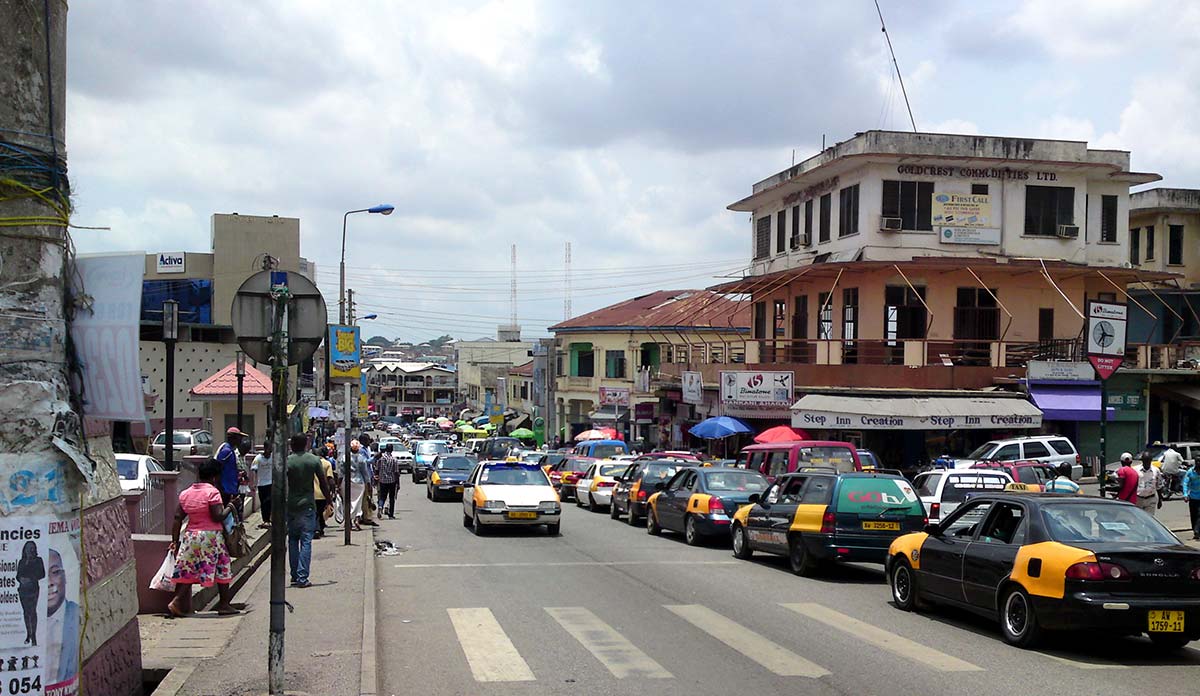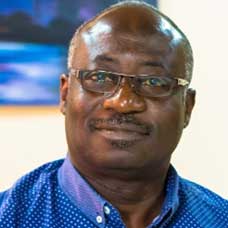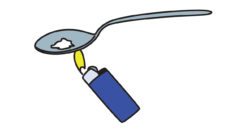Does Ghana have a drug problem? Many would say no. The West Africa Commission on Drugs and the United Nations Office on Drugs and Crime say yes. Maps of international drug trafficking patterns show that heroin passes through West Africa on its path from China and South East Asia to the Americas. Likewise, cocaine passes through on its way from South America to Europe. But no one knows how much stays in Ghana, the number of people using and injecting, or the impact on the health of those who become addicted.
We do know Ghanaians living with addiction face a high level of vulnerability ranging from HIV and other debilitating infections to social marginalization, crime, and years or even decades lost to finding the next high and avoiding the pain of withdrawal. People who inject drugs in the United States and elsewhere face similar risks. The difference is those in Ghana have nowhere to turn for clean needles, opioid substitution therapy, peer support, detox and rehabilitation services.
Yet, policy makers in both countries face the same challenges using evidence- and rights-based approaches to this public health problem. Stigma and community attitudes linking drug addiction with individual moral failing are just some of these challenges. While, needle-exchange has been legal and locally or privately funded in the United States for decades, the thirty-year ban on federal funding for needle exchange ended in 2016. Faced with the growing opioid crisis, many U.S. policymakers, health providers, and communities have been forced to embrace this and other forms of harm reduction. Ghana is at the beginning of this process of acknowledging drug addiction as a public health challenge, and the need for a harm reduction approach that meets people where they are without judgement and criminal charges.
Ghana is at the beginning of this process of acknowledging drug addiction as a public health challenge, and the need for a harm reduction approach that meets people where they are without judgement and criminal charges.
What we know about drug use in Ghana comes from a 2014 exploratory qualitative study by our research team. Our focus was Kumasi, Ghana’s second largest city. The study was a true exploration because we weren’t sure we would be able to recruit enough drug users to interview. What we found was a community of people so desperate for assistance that many told us they had rushed to join the study because someone was finally paying attention and asking them what they need to reduce their vulnerability. As one person explained: “I want to stop 100%. When my brother came to tell me about this interview, I cried to him to bring me.” Numerous participants said something similar. In the end, we had to turn volunteers away because we only had the funding, time, and ethical review board approval to talk to 30 people.
We were asked to do this study by the Ghana AIDS Commission and the United States Agency for International Development as the country was reconfiguring its response to HIV. HIV prevalence has remained relatively low compared to other sub-Saharan African countries, peaking in the adult population at 3.6% in 2004 and hovering between 1.5% and 2% over the last five years. By comparison, prevalence across sub-Saharan Africa is 4.4%, ranging from 0.5% in Senegal (lower than the United States) to 28.8% in Swaziland (the highest in the world). The HIV pandemic in Africa is typically described as “generalized,” meaning that most new infections are in the general adult population. But within each country especially vulnerable populations carry the heaviest burden.
In Ghana, 11% of women engaging in sex work and 17% of men who have sex with other men (MSM) are estimated to be HIV positive. Both sex work and same-sex relationships are illegal. However, activists, policymakers, and development partners have successfully used these high prevalence estimates as evidence that these groups need support rather than imprisonment. In 2011, this led to a National Strategic Plan for Key Populations that includes user-friendly HIV prevention, treatment, mental health services, and legal support for sex workers, their intimate partners, and MSM in hot spots around the country.
And here harm-reduction programming remains stuck: between the urgent needs of people who inject drugs and a lack of quantitative data upon which to make evidence-based decisions.
People who inject drugs are included in the Strategic Plan, but the lack of quantitative data has had a paralyzing effect on implementing even the most basic HIV and addiction recovery services. Among our Kumasi study participants, all had heard of HIV and most knew it could be transmitted through unprotected sex, but few knew it could be transmitted via unsafe injection practices. Although clean needles and syringes are inexpensive and available at pharmacies, many said they picked up their injection equipment from the ground in drug-use “ghettos” or the local hospital dumpster.
We only talked to 30 drug users, which falls far short of the threshold some key decision makers say they need to justify international or domestic investment in targeted interventions for drug users. And here harm-reduction programming remains stuck: between the urgent needs of people who inject drugs and a lack of quantitative data upon which to make evidence-based decisions.
While still marginalized in the U.S., people living with addiction are increasingly visible, as are the challenges they face. In Ghana, they are still living in the shadows where their very existence and high level of vulnerability are easy to overlook. Public health researchers and advocates in both countries are changing the narrative in a way that replaces moralism and denial with effective interventions that meet people where they are, offering social recognition, compassion, and hope that using a clean needle today or injecting in a safe facility will prevent infections and may be a step on the road to recovery. Gathering quantitative data is a critical next step as is implementing harm reduction and targeted HIV programming as quickly as possible.
Acknowledgement
This article is based on the research we conducted in collaboration with our data collection team at Kwame Nkrumah University of Science and Technology: Thomas Agyarko-Poku, Rose Odotei Adjei, Sherry Adoma Bempah, Ernest Ekutor, and Francis Gaissie-Essuman. It is dedicated to the memory of Francis Gaissie-Essuman.
Feature image: Maarten van der Bent, Kumasi, used under CC BY SA 2.0















